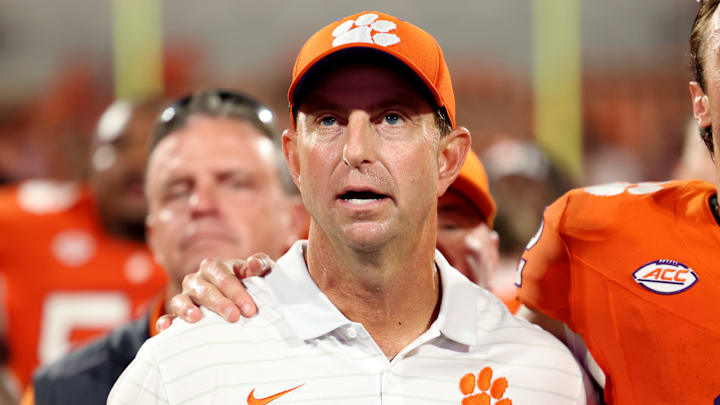The conversation changed the moment Syracuse walked out of Death Valley with a 34–21 win, puncturing Clemson’s margin for error and patience all at once. The loss wasn’t fluky: the Orange led 24–7 in the second quarter, went 4-for-4 in the red zone, and forced the game’s defining turnover—a snapshot of Clemson’s 2025 inconsistencies on third down, explosive plays allowed, and situational football.
Swinney’s own defiant sound bite this week—“If Clemson’s tired of winning… I’m gonna go somewhere else and coach”—became a Rorschach test. To some, it read as supreme confidence. To others, it sounded like a coach wrestling with the modern sport’s headwinds as on-field results lag.
The case that Dabo can fail
1) Results vs. expectations. Clemson built its standard on Playoff-or-bust. When you miss that mark and drop marquee September games at home, the fan temperature spikes. Even national voices who rode the offseason hype are backtracking—Rece Davis admitted he “might have been wrong” about the Tigers as a title pick.
2) Identity tug-of-war. Clemson’s offense has looked disjointed against quality opponents, and the defense—retooled under new leadership—hasn’t consistently masked it. The gap between “how Clemson wants to win” and “how top-10 teams win right now” (tempo, portal-enhanced depth, explosive plays) shows up in pivotal sequences like third/fourth downs and sudden-change spots. Saturday was a case study.
3) The narrative momentum. From pundits questioning messaging to columns daring him to test SEC waters, the external drumbeat amplifies every misstep. That noise doesn’t decide jobs—but it frames them.
…but here’s why he may be too big to fire
1) The buyout is a brick wall—today. Swinney’s 2025 buyout sits at roughly $60 million, sliding only slightly in 2026. That’s not just big—it’s program-altering big, especially in an era when schools also must fund roster payments and NIL infrastructure.
2) Donor politics + NIL reality. Clemson has leaned into the new model, integrating IPTAY benefits with its collective and planning to share the maximum allowable revenue with athletes in 2025–26. Translation: the school is asking donors for unprecedented, multi-front investments. Writing a $60M coaching check on top of that is a far harder sell than Twitter thinks.
3) Legacy equity still counts. Two national titles, a decade of relevance, and the branding halo that came with it still carry weight in boardrooms. Even critics concede he’s earned time—if only because paying to reset the entire operation (staff, portal rebuild, recruiting churn) is more than just one buyout line item.
What has to change (and fast)
Lean into pragmatism over principle. Whether through portal tweaks, role clarity, or personnel shuffles, Clemson has to buy easy offense and reduce “perfect play” dependence.
Win the leverage downs. The Tigers were 2-for-11 on third down against Syracuse; that’s how upsets harden into narratives.
Own the message. The “tired of winning” line rallied loyalists but poured gas on skeptics. A steadier tone—paired with visible fixes—can lower the temperature while the team repairs the plane mid-flight.
The bottom line
Swinney is absolutely not too big to fail—scoreboards don’t care about past parades. But in September 2025, he might be too expensive and too embedded to fire, especially when Clemson’s leadership is simultaneously asking donors to bankroll a modern “front office” for NIL and revenue sharing. If results tick up and the Tigers find a functional identity, the pressure valve releases. If they don’t, the conversation shifts from “Can they?” to “When can they afford to?”—a calculus measured as much in dollars and politics as in wins and losses.
